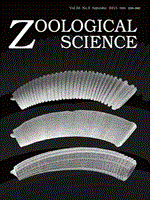The compound ascidian Botryllus schlosseri reproduces asexually, and forms colonies to adhere to matrices such as rocks. This species has developed a mechanism to distinguish between self stem cells and invasive parasitizing nonself cells from other individuals of the same species, probably as a defense against parasitism. It is highly likely that such adult colony histocompatibility is controlled differently from its gametic allorecognition during fertilization. Allorecognition in adults is controlled by a single fusion/histocompatibility (FuHC) locus. In 2005, a candidate gene responsible for the phenotype associated with this genetic locus, named cFuHC, was reported; however, this proposal was subsequently refuted, and the actual determinant may exist elsewhere within the FuHC locus. Given that its is unlikely that a single gene could produce the diversity of FuHC alleles needed to determine individual identity and to distinguish self from nonself colonies, it is possible that the FuHC locus consists of a cluster of multiple determinants aligned in tandem.
How to translate text using browser tools
1 September 2013
Allorecognition Between Compound Ascidian Colonies
Yoshito Harada
ACCESS THE FULL ARTICLE

Zoological Science
Vol. 30 • No. 9
September 2013
Vol. 30 • No. 9
September 2013
allorecognition
Botryllus schlosseri
FuHC
histocompatibility
self/nonself recognition




